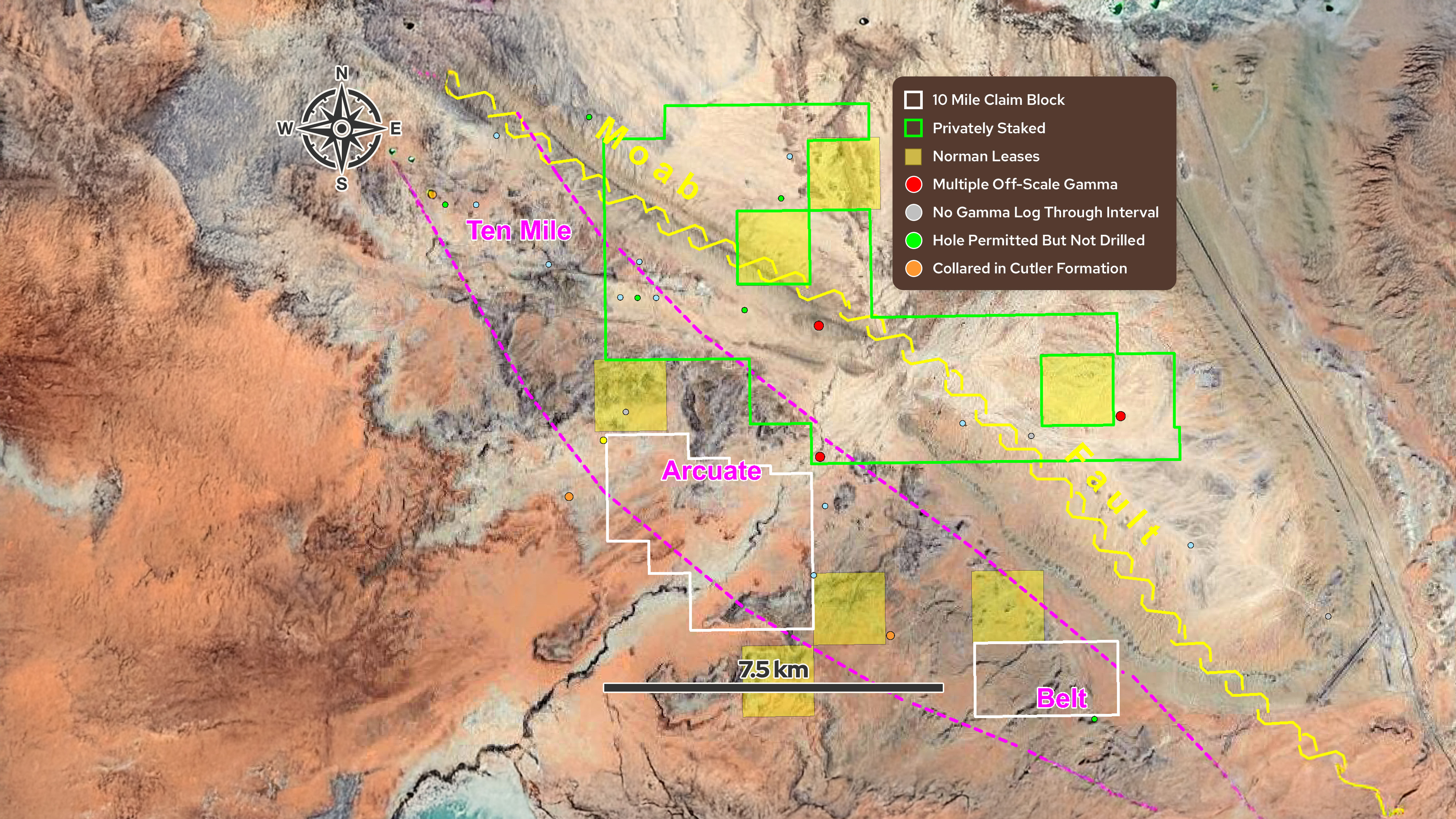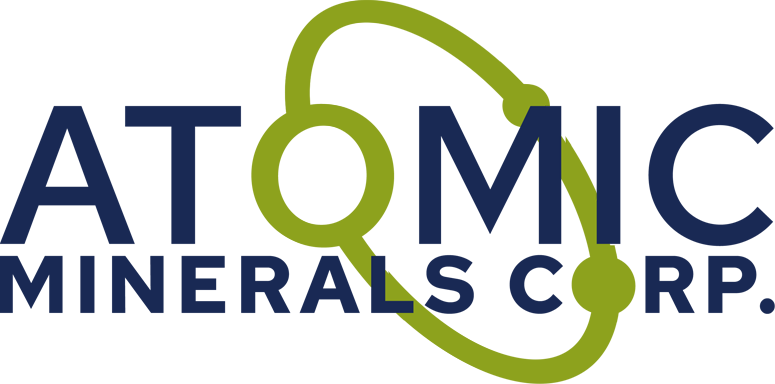10 Mile
Overview
The 10 Mile anticline was first identified in 1972. In 2022, Atomic Minerals staked 5,020 acres in two claim blocks at 10 Mile. A review of oil and gas gamma ray logs revealed radiation anomalies within the lower Chinle Formation, outlining a suspected 15-kilometer arcuate belt along the west side of the anticline. On the east side, the Moab Fault has down-dropped the Chinle Formation to depths exceeding 3,500 feet. Uniquely at 10 Mile, a significant number of gamma ray anomalies were also identified in the shallower Morrison Formation.

Exploration Plans
The permitting process has been initiated for the 10 Mile Anticline Project, where historical oil and gas drilling has indicated potential uranium mineralization. The plan includes conducting exploratory drilling to further assess the uranium potential.

